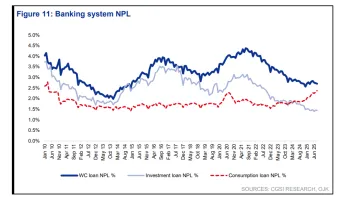What you don't know about Indian Rupee volatility
By Rahul MaganThe purpose of the article is to draw attention on the recent volatility in Indian Rupee, various hedging options and effective hedging strategies.
As we all know Indian economy is getting more and more globalized and thanks to the various initiatives taken by Indian Information Technology Industry (IT), Strategic M&A’s done by Steel Industry, expansion of Cement industry and respective other corporate initiatives which lead to more Foreign Exchange flows in India.
With these rising initiatives there is a great inflow of foreign exchange in Indian markets in the form of foreign currency receivables and payables.
Some of these payables are in the form of ECB, FX working capital loans, Issuance of Certificate of Deposits (CD), Commercial papers, FCCB, FCNR deposits and other money market instruments to fund working capital needs.
In the last few years we have seen huge flow of G7 currencies like USD, GBP, and EUR, Commodities currencies like Australian Dollar, New Zealand Dollar and Canadian Dollar in India.
Such inflow of funds forced Treasurers to effectively implement respective hedging strategies which should be in line with respective exporting models #1.
The hedging strategies can be linked with derivatives instruments like Plain Vanilla forwards contracts (STFX/LTFX), Foreign exchange Options, Risk reversals, Zero Cost collars, Interest rates Swaps and Interest rate hedging strategies.
These derivatives instruments are not only highly effective in nature but also able to mitigate the impact of both exchange rates and Interest rates volatility at your bottom lines.
They also play a significant role where in cost is in INR however invoicing happens in foreign currencies specially like United States Dollar (USD) which in turn would create the need for effective hedging strategy.
One interesting fact about globalization is the rising foreign currency loans in the books of Indian corporate especially Indian Steel sector #2 due to expansion in various geographies, Capex funding and strategic M&A’s. Such Foreign currency loans are subject to two types of risks - Revaluation risks and Hedging risk.
Corporate Treasurers are unable to mitigate the effects of revaluation on their bottom lines however would be able to perform hedging risk via Interest rates products like Interest rate swaps which in turn covers Principal Only Swaps (POS), Coupon Only Swaps (COS), Principal and Coupon both, basis swaps, Constant Treasury Swaps and respective others.
Majority of these foreign currency loans are taken in USD however realizations done in local currency to meet working capital needs hence forth there is a great risk due to volatility in Interest rate risks.
Predominantly Foreign exchange markets are divided into two parts - Over the Counter (OTC) and Exchange Traded Derivatives (ETD) with the combined daily turnover of $ 5.3 Trillion # 3.
OTC is amongst the largest markets in the world comprises of majority of the trading in various plain vanillas and cross currency pairs like USD/INR, USD/PHP, EUR/USD, USD/CAD, USD/JPY, GBP/USD, AUD/YEN, GBP/AUD, EUR/GBP and USD/SGD.
There is no unique trading platform for OTC as majority of the trades happening either on phones or mails. OTC also have non-zero counter party risk however ETD would be able to mitigate credit risk by having leverage structures like (Margin Call, Variation Margins, daily based M2M).
The biggest drawback with ETD is it is not very deep in nature hence forth Treasurers are unable to cover their exposures beyond 4 – 6 months and also forced to use simple derivatives instruments like Plain vanilla forwards contracts, Foreign exchange options contracts in USD, EUR, GBP and commodities currencies.
As on today Indian Rupee is facing huge volatility due to both internal factors like Current Account Deficit (CAD), Trade Deficit, Gold Imports, and Policy conundrum and external factors like US Federal Reserve Tapering, Quantitative Easing by Fed, BOJ, ECB and SNB, and Institutional flows.
The following is the currencies chart which do confirm that INR is the most volatile exchange pair in the world amongst Asian and G7 currencies.
Source: - Thomson Reuters, 17th Nov 2013(Period taken YTD Nov 2013)
Note: - Positive ratios means depreciation and negative means appreciation of currencies vs. USD
Call for Treasurers - Hedging of forecasted receivables & payables
Considering the current volatility in the INR Treasurers should hedge considerable part of their receivables and payables using layering hedging strategy keeping their business model in mind.
Treasurers having Information Technology business model should hedge their Cash flows receivables using 6 months layered hedging program #4.
Treasurers should also offset the revaluation impact of foreign currency receivables using fair value hedging done at offshore locations in the form of Non-Deliverable Forwards Contracts or Non Deliverable Options or Swaps contracts.
Hedging of forecasted receivables using forwards contracts
Considering the current volatility in INR Treasurers should hedge some part their forecasted receivables using both plain vanilla forwards contracts using OTC and Exchange traded contracts like futures where in daily settlement is required.
The hedging of forecasted receivables can be done both at OTC levels or ETD where in exchange is involved. The only difference between an OTC and ETD contract is former is available till 20 Years using both onshore and offshore markets while the later ETD is available till near 6 months.
One great fact here about ETD is it offers various Options payoffs structures which would lead to more gain in the books.
There are various Information Technology and OIL companies in India which hedge their forecasted receivables and payables at both OTC and ETD level. Using this strategy Treasurer is able to play with various payoffs strategies and create an arbitrage between OTC and ETD at onshore levels.
Hedging of forecasted receivables using Options contracts
In this Treasurers should hedge their forecasted revenue via plain vanilla Buy Put Options contracts having three choices –
• Plain Vanilla Buy Put Contract
• Collar Contracts (Export Side) – Buy Put and Sell Call, Collars
(Import Side) – Sell Put and Buy Call
• Seagull (Export Side) – Collar Contracts (Export side) + Buy Call or Seagull (Import Side) - Collar Contracts (Imports side) + Sell call.
Option 1 (Conservative Treasury) In this Treasurer would sell forecasted receivables using Plain vanilla Buy Put Options contracts wherein he would get a right however not an obligation to sell his receivables at an agreed rate.
Example: Treasurer sells $ 1 Mn as Buy Put contract wherein he is selling $ and buying INR at an agreed rate of INR 65.00 /$. If at maturity exchange rate happens to be at INR 66/$ then he would let his contract worthless and sell his $ 1 Mn in market.
In case exchange rate happens to be at INR 62.00 /$ then he would execute his trade. To get this right Treasurer will pay an upfront premium to bank and higher the strike price higher the upfront premium.
Option 2 (Moderate Treasury) In this Treasurer would sell forecasted receivables using exports collars which is Buy Put and Sell Call and under this he would get a right however not an obligation to sell his receivables at an agreed collar rates.
Example: Treasurer sells $ 1 Mn under exporting collar which is Buy Put and Sell Call contract wherein he is selling $ and buying INR at an agreed rate of INR 65.00 /$ for Buy Put and INR 67.00/$ Sell call. If at maturity exchange rate happens to be at INR 66/$ then he would let his contract worthless.
If exchange rate happens to be INR 58.00 then he would utilize Buy Put contract. If exchange rate happened to be INR 68.00 /$ then bank would but $ at INR 67.00 from him and sell at INR 68.00/$ in the market
and get a gain of INR 1 /$.
Option 3 (Aggressive Treasury) In this Treasurer would sell forecasted receivables using Seagull contracts (Exports Side) which is nothing but sum of exports collars + Buy Call. Under this Treasurer would get a right however not an obligation to sell his receivables at an agreed collar rates + Buying $ contract.
Example: Treasurer sells $ 1 Mn under seagull which covers collars Buy Put and Sell Call + Buy Call contract wherein he is selling $ and buying INR at an agreed rate of INR 65.00 /$ Buy Put and INR 67.00/$ Sell call + Buy Call of INR 64.00 / $.
If at maturity exchange rate happens to be at INR 66/$ then Treasurer would do buy Call at INR 64.00/$ and sell in mkt. at INR 66.00/$ and his collar get worthless because the rate is falling under both Buy Put and Sell Call.
#1 – Exporting models includes Information Technology and Software Services, Software development and services, Annual maintenance contracts (AMC), Business Process and Outsourcing services (BPO) and Information Technology enabled services.
#2 –As per Indian banking sector, Indian steel sector holds INR equivalent of Rs 165,000 Cr of Foreign Currency debt in the books which is not only subject to revaluation but also subject to import side hedging risk.
#3 – Covers Interest rate derivatives, Interest rate swap, Credit Default Swaps (CDS), Basis Swaps and other Interest rate hedging instruments.
#4 – Layered hedging program can move up to 7 Years quarterly hedging programs, monthly rolling hedge programs, yearly fixed ratios hedging.



















 Advertise
Advertise






